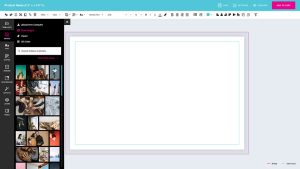When it comes to creating a marketing plan, one of the most important things you should outline is your target audience. If you don’t know who your ideal customers are, how can you create an effective marketing plan to reach them? The simple answer: you can’t.
Defining your target market is important for 5 reasons:
- Efficient Budget Spending
- Effective Marketing Plan
- Increase Sales
- Keep Up with Competitors
- Exceptional Customer Service
What is a Target Audience?
Your target audience is comprised of everyone you want to aim your marketing efforts toward. These are the people who need and will purchase your products. The purpose of defining your target market is to create an effective marketing plan that focuses on reaching these potential customers, and avoids wasting marketing resources on people who are unlikely to convert into customers.
Defining Your Target Market as A Small Business
Often, small businesses do not have the luxury of relying on their brand name in order to drive sales. Therefore, your focus should be on targeting a niche market that is not currently being targeted by your competitors. You can compete with more recognized businesses by concentrating on a smaller, more focused market and forging a tighter connection with this audience, which larger companies may neglect.
This generates a target audience that is more closely connected to your brand, and allows you to reach potential clients looking for your product or service. By concentrating your marketing efforts on a smaller pool, your marketing strategy can be effective and affordable. For these reasons and more, defining your target audience should be the first step in any marketing strategy.
Why Do I Need to Know My Target Audience?
In order to ensure you are efficiently spending your marketing budget, you need to know which segment of the population needs your products. You don’t want to target a large, general audience because not everyone has a need for your products or services. By knowing your target market you can focus your marketing budget on reaching this demographic and customizing your message to them.
Ultimately, you’ll be spending less and converting more visitors.
Larger companies can afford to use their marketing budget to target a large blanket audience because the brand is established, and they will see an ROI based solely on brand awareness. You don’t want just any person seeing your advertising. You want to target people who are actually looking for your products or services.
Defining Your Target Audience
Now that you understand the importance of narrowing down your target market, you need to define who they are and where they are located. A good place to start is with your product or service. What are the benefits of your product, and why would someone want to purchase it? What problems does it solve?
Once you’ve established the benefits of your product, you can work backwards and think about who has these problems, and who would benefit from your product or service. These are the people you need to understand and who you should be targeting.
When it comes to defining your customers, looking at your current customers can help. Where do they live? What gender are they? How old are they? If you are a new business, and are unsure of who your customers will be, look at your competitors for an idea. You are not necessarily going for the same audience as your competitors, but it can provide a starting point.
Here are some demographics you should think about when deciding on your target audience:
- Gender
- Age
- Location
- Occupation
- Income (selling luxury products targets a different income level than a loan company, for instance)
- Level of Education
- Religion
- Lifestyle (how would someone use your product or service in their life?)
- Hobbies/Interests
- Any other characteristics your customers have in common
It is important to find the balance between a targeted audience and a wide enough reach. Having an audience that is too specific can be detrimental. If you’ve defined your audience to the point where only 100 people meet your criteria, your marketing strategy will quickly reach a dead end. You need to have a realistic understanding of how many people will fit your criteria, and adjust your targeting accordingly. It is also realistic to have multiple audiences to target different niches, and sell different products or services your business offers. This will encourage a balance between target and reach.
To learn more about reaching your target audience and how it can improve your customer service, keep a look out for Part 2 of “Defining Your Target Market.” Alternatively, find a Print Three Smart Business Centre near you to connect with one of our marketing experts who will help you devise a marketing strategy to reach your target audience.





















